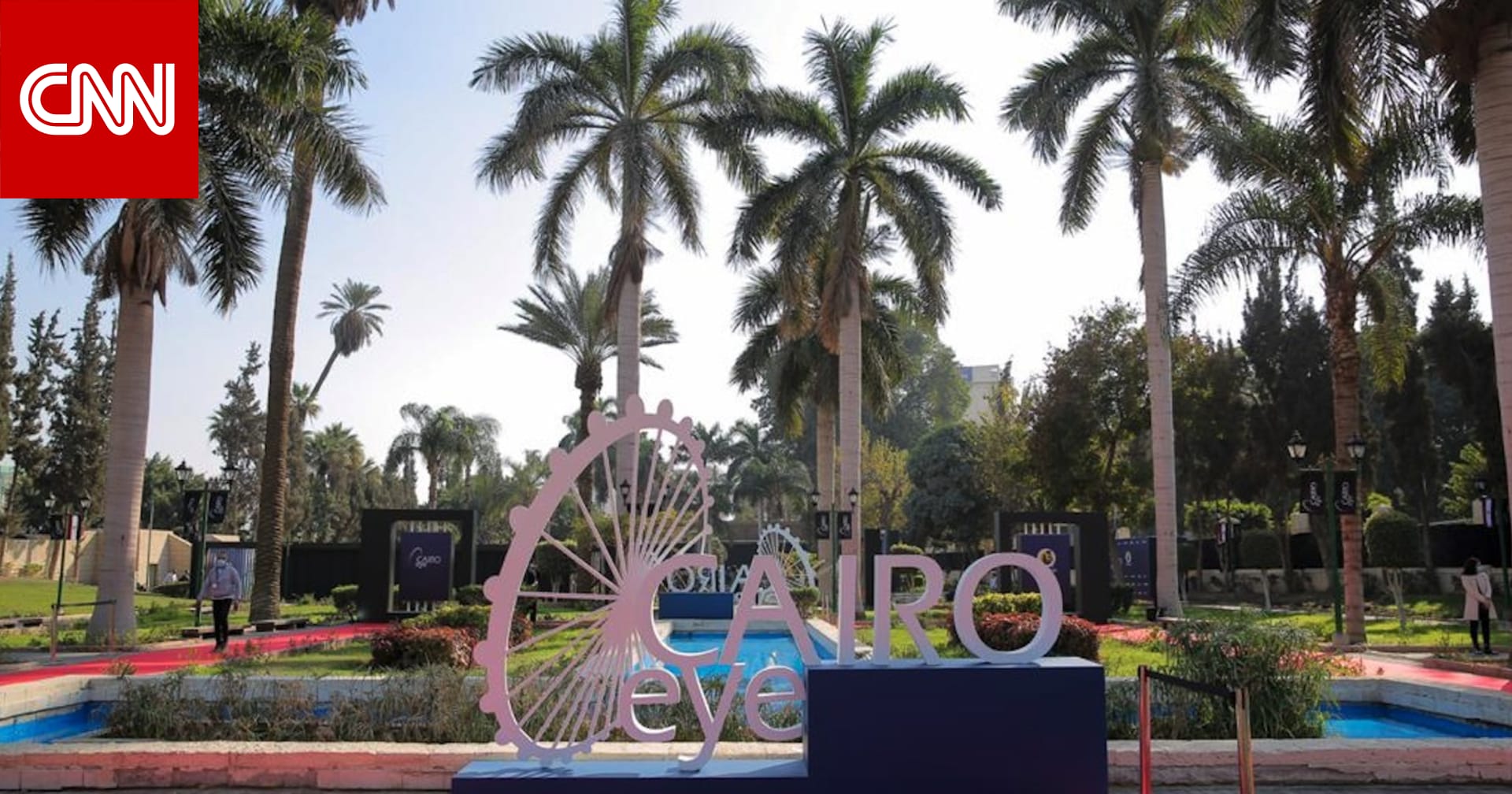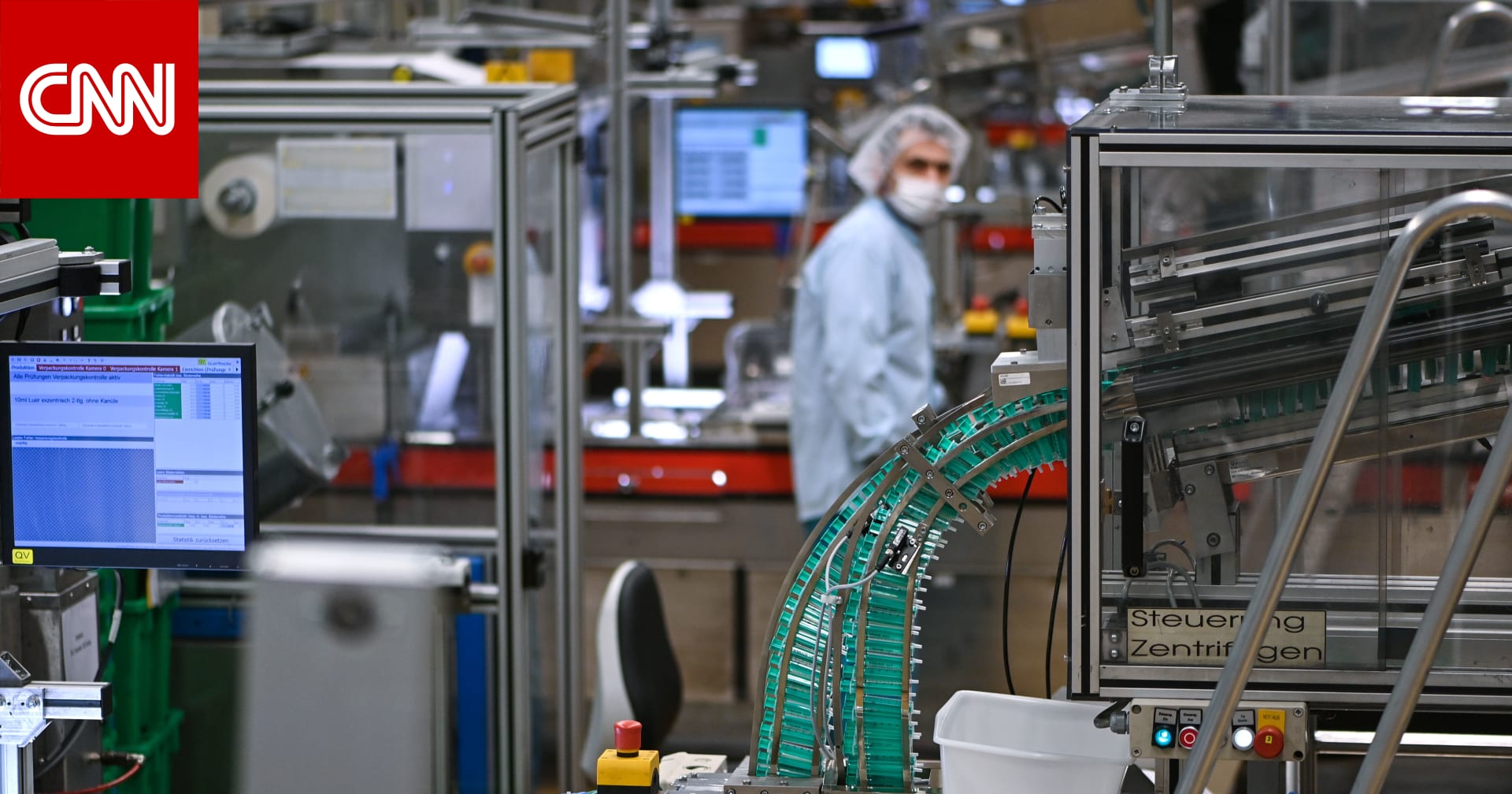Cairo, Egypt (CNN) – The Ain Cairo and Ismailia Square Bridge projects are witnessing great controversy in Egypt, as the first is a rotating recreational wheel in Zamalek, and the second bridge starts from Ismailia Square in the Heliopolis area up to the Presidential Palace, despite the difference between the two projects and supervisors Their implementation and location, but they sparked widespread controversy, which is the issuance of statements by the people of the two areas on social media pages rejecting the two projects, followed by support from public figures with publications confirming the right of the people’s demand to reject the project, and then interrogations by parliamentarians, in the absence of a clear government response.
The controversy over the Cairo Eye project began after a private company announced in a press conference, held on January 21 last, and in the presence of the Minister of Tourism and Antiquities, Dr. Khaled Al-Anani, the Governor of Cairo, Major General Khaled Abdel Aal, and Major General Amir Sayed Ahmed, the President’s Adviser for Urban Planning, the launch of the project “Eye of Cairo”, which is the establishment of the first recreational and touristic wheel in Cairo and the largest of its kind in the African continent, at the Obelisk Park in Zamalek. The wheel is set at a height of 120 meters, and allows its visitors to see 50 kilometers from Cairo and see all the prominent landmarks surrounding it. With investments of 500 million pounds, and it was not until 24 hours before the conference was held that the people of the region issued statements on social networking sites rejecting the project, including several reasons, most notably the difficulty of establishing Cairo Eye in the Zamalek area due to its negative impact on making the scroll wheel noise and congestion in the area as a result of visitors, in addition to On the negative impact on the historical park and its trees.
Public figures reacted quickly to the residents’ refusal, as businessman Naguib Sawiris wrote in his blog on Twitter, in response to a question from one of his followers about the Cairo Eye project, saying: “The project is in the wrong place and it stops traffic completely at the entrance to Zamalek! It is very good in the capital. Administrative “.
For his part, former Minister of Industry Munir Fakhry Abdel Nour wrote: “The Cairo Eye project to be established in Zamalek is catastrophic, where are the traffic, environmental and regulatory studies that it was based on?” In their articles, prominent journalists attacked the project and its goal, and demanded that it be transferred from the region to other proposed places Such as the 6th of October City, the New Administrative Capital, or one of the other Nile islands.
The executing company of the project responded to the people of Zamalek’s refusal to establish the Cairo Eye project, and refuted all objections, confirming that the project had drawn up an accurate traffic study. To ensure traffic flow in that sensitive area in Zamalek, by providing various means to reach the project location, such as the river transport service using the Ain Cairo taxi and Ain Cairo free transport buses, Hop On / Hop Off, in addition to allocating a parking lot for 500 cars above the ground and at a height of two floors, In its design, all environmental considerations were taken into account and preserving the identity and identity of the Zamalek area, taking into account the preservation of all trees and palms in the Obelisk Garden.
After the exchange of data, the controversy moved to the halls of parliament, and Dr. Ashraf Hatim, head of the Health Affairs Committee in the House of Representatives, submitted a request to be informed of the refusal to establish the project under the pretext that Zamalek Island is a natural reserve, and that the Obelisk Park is a heritage park and an annex of the state facilities that can only be disposed of. With the rules, procedures and laws regulating this, Representative Nora Ali, Chairman of the Tourism Committee in the House of Representatives called on the Minister of Tourism and Antiquities to search for a site other than Zamalek Island to establish the project, and Minister Dr. Khaled Al-Anani responded to the members’ remarks during the plenary session of Parliament on the Cairo Eye project, saying : “The Ministry of Tourism has no relationship, near or far, with the project, and it does not fall within the jurisdiction of the Ministry of Tourism, nor does the land on which the project is a tourist land, and it has not obtained a license from antiquities,” according to what was reported by local media.
As for the controversy over the construction project of the Ismailia Bridge in Heliopolis, it began with the circulation of a statement attributed to the people of Heliopolis, declaring their refusal to build a bridge 2 km long from Ismailia Square, passing through Othman Ibn Affan Street, then the Basilica Square and adjacent to the Basilica of Our Lady, and the length of Al-Ahram Street, which is The first and most important axis of the heritage district, up to the Presidential Palace and the Heliopolis Sports Club, considering the establishment of this bridge will destroy this distinctive heritage area, which is the heart of the Heliopolis neighborhood, in addition to the negative impact on the quality of life in this ancient neighborhood and the catastrophic environmental and security impact.
The same thing, public figures began to support the rejection of the people, headed by Amr Moussa, the former Secretary-General of the League of Arab States, who issued a statement on Facebook, confirming his solidarity with the demands of the people of Zamalek and Heliopolis, saying: “I add my voice to the voices of the citizens who protested the project of the wheel. The Cairo Eye roundabout, to be established in an area crowded with clubs, hotels, schools, many activities, and the movement of cars and people already; and in the land of a historical heritage park that must be preserved and not touched upon or any green land in all of Cairo, and I also salute the efforts made by citizens in the Heliopolis neighborhood towards The bridge project to be established in the historical and heritage Al-Korba region, as well as following them up and expressing their opinion on the construction taking place inside the palace of Baron Empan, founder of the suburb.
It was preceded by the issuance of a statement by Amr Al-Sonbati, a member of the House of Representatives from the Heliopolis district, and he confirmed that the passage of the bridge in an archaeological area next to the Basilica Church represents a great cultural damage to the region. The House of Representatives, and the representative of the Parliament’s Housing Committee, issued a statement declaring full solidarity with the demands of Heliopolis residents and residents of Salah al-Din and Al-Ahram Street not to be convinced of the bridge project, stressing the need to preserve this unique heritage and historical area, and this is more important than improving traffic, which is very acceptable Currently in the region, and despite these data, there has been no official response from the Egyptian government.
For his part, Amr Hussein, a member of the Tourism Committee in the House of Representatives, supported the demands of relocating the Cairo Eye project from the Obelisk Park in Zamalek, saying: “Although the Cairo Eye project has a positive tourist return and will increase the tourism sector shares, but choosing its place in the Obelisk Park is not appropriate. Because it is a historical and heritage park, “proposing implementing the project in other areas such as 6th of October City or New Cairo and other large areas.
However, he disagreed over the construction of a bridge in Ismailia Square in Heliopolis. Hussein said, in exclusive statements to CNN Arabia, that the new bridge reduces suffocation in this area, as part of the state’s implementation of mega-projects studied in roads and bridges. .
He concluded his speech by saying, “Parliament has a supervisory and legislative role, and it questions any problems that may arise, and not just objection.”
Amani Emile Al-Shaouli, a member of Parliament, agreed with him about the inadequacy of establishing the Cairo Eye project in the Zamalek region, explaining that the project is not limited to constructing a rotating wheel, but includes a recreational area and another for events, and therefore needs an area that accommodates the expected turnout, proposing to implement it either in the capital. New administrative or 6th of October City.
With regard to the crisis of constructing a bridge in Ismailia Square in Heliopolis next to the Basilica Church, Al-Shaouli confirmed, in exclusive statements to CNN in Arabic, that the construction of the bridge is part of the government’s efforts to develop the East Cairo area, noting that some objected to distorting the place surrounding the church on the pretext that it is archaeological, despite That the church was established nearly 100 years ago.





:max_bytes(150000):strip_icc()/Vincent-DOnofrio-Daredevil-Tout-EW-11425-bc90f0c0512d485d87e89fb27467a597.jpg)